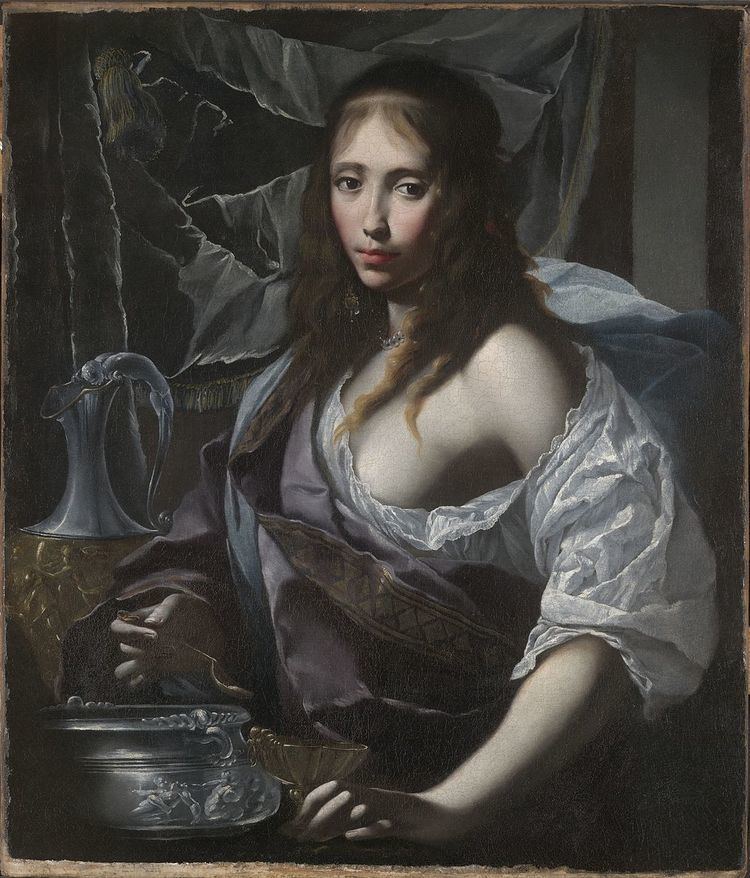Reign 353–351 BCE Name Artemisia of Parents Hecatomnus | Predecessor Mausolus Spouse Mausolus Siblings Mausolus | |
 | ||
Structures | ||
Artemisia ii of caria
Artemisia II of Caria (Greek: Ἀρτεμισία; died 350 BCE) was a naval strategist, commander and the sister, the wife, and the successor of Mausolus, ruler of Caria, the Persian satrap; Mausolus enjoyed the status of king or dynast of the Hecatomnid dynasty. After the death of her brother/husband, she reigned for two years, from 353 to 351 BCE. Her ascension to the throne prompted a revolt in some of the island and coastal cities under her command due to an objection to a female ruler. Her administration was conducted on the same principles as that of her husband; in particular, she supported the oligarchical party on the island of Rhodes.
Contents

Because of her grief for her brother-husband, and the extravagant and downright bizarre forms it took, she became to later ages "a lasting example of chaste widowhood and of the purest and rarest kind of love", in the words of Giovanni Boccaccio. In art, she was usually shown in the process of consuming his ashes, mixed with drink.
Life
She is renowned in history for her extraordinary grief at the death of her husband (and brother) Mausolus. She is said to have mixed his ashes in her daily drink, and to have gradually pined away during the two years that she survived him. She induced the most eminent Greek rhetoricians to proclaim his praise in their oratory; and to perpetuate his memory she built at Halicarnassus the celebrated Mausoleum at Halicarnassus, listed by Antipater of Sidon as one of the Seven Wonders of the Ancient World and whose name subsequently became the generic term for any splendid sepulchral monument.
She is known for commanding a fleet and played a role in the military-political affairs of the Aegean after the decline in the Athenian naval superiority. The island republic of Rhodes objected to the fact that a woman was ruling Caria. Rhodes sent a fleet against Artemisia without knowing that her deceased husband had built a secret harbor. Artemisia hid ships rowers, and marines and allowed the Rhodians to enter the main harbor. Artemisia and her citizens met the Rhodians at the city walls and invited them into the city. When the Rhodians began exiting their ships, Artemisia sailed her fleet through an outlet in the sea and into the main harbor. She captured empty Rhodian ships, and the Rhodian men who disembarked were killed in the marketplace. Artemisia then put her men on the Rhodian ships and had them sail back to Rhodes. The men were welcomed in the Rhodian harbor and they took over Rhodes.
Polyaenus, in the eighth book of his work Stratagems, mentions that when Artemisia (he may have been referring to Artemisia I, but more probably Artemisia II) wanted to conquer Latmus, she placed soldiers in ambush near the city and she, with women, eunuchs and musicians, celebrated a sacrifice at the grove of the Mother of the Gods, which was about seven stades distant from the city. When the inhabitants of Latmus came out to see the magnificent procession, the soldiers entered the city and took possession of it.
Other monuments
Another celebrated monument was erected by her in Rhodes to commemorate her conquest of the island. The Rhodians, after regaining their liberty, made it inaccessible, whence it was called in later times the Abaton (άβατον).
In later art
Artemisia drinking her husband's ashes was a subject in painting from the Renaissance onwards, especially enjoying a vogue in Dutch Golden Age painting around the middle of the 17th century, being painted by Rembrandt (Prado) among others. This was probably stimulated by the publication in 1614 of a Dutch translation of the collection of anecdotes of Valerius Maximus, who was active in the reign of Tiberius. Rembrandt for one can be shown to have read and used this book.
Artemisia is always shown with a cup or urn, either alone or with a group of attendants offering or helping to mix the drink. The subject is therefore very similar to Sophonisba taking poison, and the Rembrandt, and a Donato Creti in the National Gallery, are examples of works where the intended subject remains uncertain between the two.
